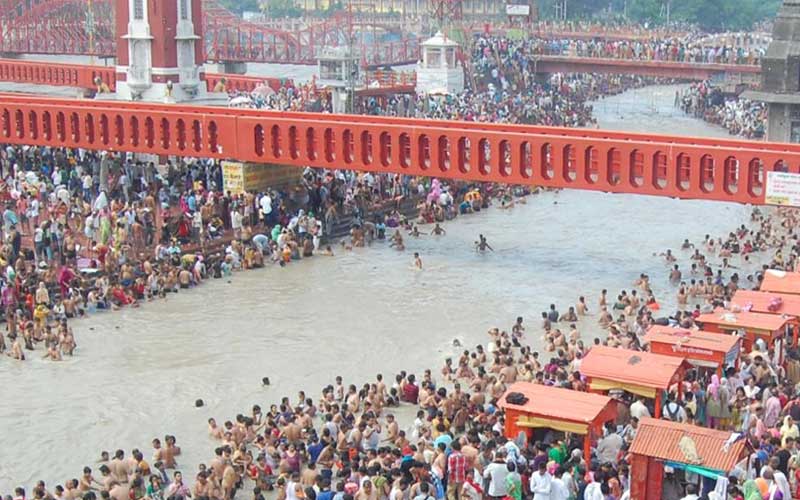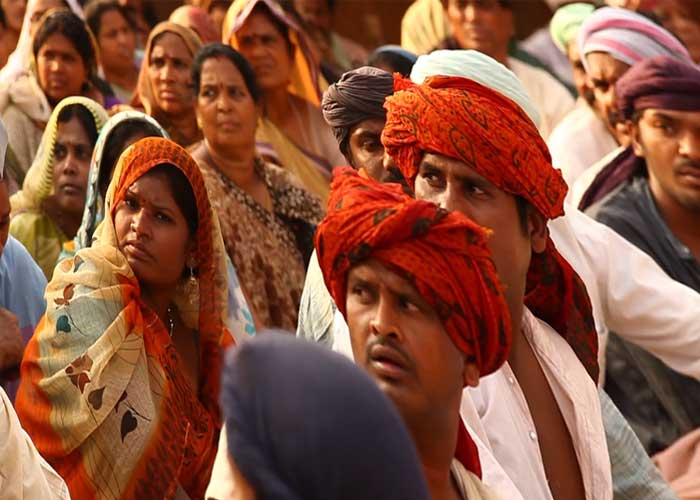Ladakh Population 2025
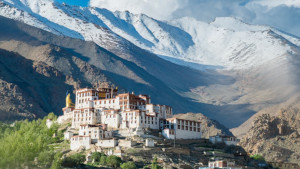
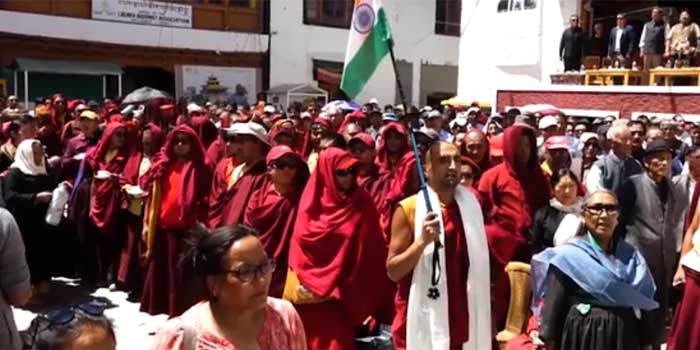
Source Image: Ladakh people celebrating the formation of Union Territory

Galwan Valley
According to the book Forsaking Paradise and as per the thefederal news, Ghulam Rasool Galwan or Ghulam Rassul Galwan had arrived in Leh in 1895, the river valley is named after a native explorer of Kashmiri descent Ghulam Rassul Galwan, whose forefathers belonged to the famed Galwan (the Galawan) tribe of Kashmir.
Ladakh Population by Religion
Ladakh's earliest inhabitants consisted of a mixed Indo-Aryan population of Mons and Dards, Ladakh was a part of the Kushan Empire in first century. Ladakh is the one of the oldest and ancient Buddhist region with historic ties to Tibet as Buddhism spread into western Ladakh from Kashmir in the 2nd century, Many of the immigrants of Tibet, Skardo and nearby parts like Purang, Guge settled in Ladakh. Buddhism is dominated in Leh district and Muslim is dominent regligion in Kargil district. As per the census 2011 Ladakh population religion wise and demographics for the two districts Leh and Kargil, Islam is followed by 46%, Budhism with around 40% population and 12% by Hindus, and other religions are less than 1%. The muslim population of Ladakh is the largest with 127,296 people followed by Buddhists with 108,761 and Hindus with 33,223.
| Religion | Persons | Percentage | Males | Females |
|---|---|---|---|---|
| Hindu | 33,223 | 12.11 | 31,942 | 1,280 |
| Muslim | 127,296 | 46.41 | 66,255 | 61,041 |
| Christian | 1,262 | 0.46 | 1,001 | 261 |
| Sikh | 2,263 | 0.83 | 2,119 | 144 |
| Buddhist | 108,761 | 39.65 | 54,207 | 54,554 |
| Jain | 131 | 0.05 | 65 | 66 |
| Others | 58 | 0.02 | 32 | 26 |
| Not Stated | 1,295 | 0.47 | 1,134 | 161 |
Ethnic groups of Ladakh
Ladakh lies in the north-east region of India, eastern side of Jammu and is surrounded by the Himalayan mountain ranges popularly called Great Himalayas.Ladakh experiences extreme type of climate where the temperature ranges from minus 35 degree Celsius in winter to 33 degree Celsius in summer. Ladakh was an independent province since the middle of the 10th century. The ancient inhabitants of Ladakh were Dards, an Indo-Aryan race. Immigrants of Tibet, Skardo and nearby parts like Purang, Guge settled in Ladakh, whose racial characters and cultures were in consonance with early settlers. The early religion of Ladakh wasthe people who worshipped many gods, the people also worshiped correlated with the water, earth, fire and mountains. Buddhism traveled from central India to Tibet via Ladakh leaving its imprint in Ladakh. Islamic missionaries also made a penetration of Islam in the early 16th century.
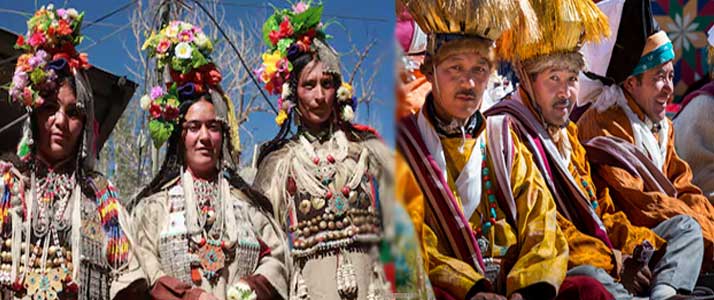
Languages spoken in Ladakh
The main language of Ladakh is Ladakhi, a Tibetan language, other dialects are Changpa and Purigpa. Bauti is spoken by majority, Hindi, Balti and Purkhi in Leh district. Kashmiri, Balti, Ladakhi, Shina and Hindi is spoken in the Kargil district. Source: 2011 Census: Language and Mother Tongue
Income Distribution
The district is bounded by Himalayas and it is the coldest and most elevated inhabited region in the country with altitude ranging from 2300 meters to 5000 meters. The main occupation engaged the workforce is agriculture and live stock. Agriculture is the backbone of the district economy as it engage over 70% of the working force mostly as cultivators, agricultural laborers, livestock and Tourism has won a wide recognition as an important industry in the district in view of its potential for creation of employment opportunities and generation of income on a large scale. Leh has registered an increasing number of tourists both from India and Foreign countries which attracted towards it because of its landscape, culture, tradition and environment. Ladakh population in 2022 is estimated to be 300 Thousand (3 Lakhs), population in 2021 is estimated to be 289 Thousand (2.8 Lakhs), and population in 2023 is estimated to be 302 Thousand.
District wise population in Ladakh
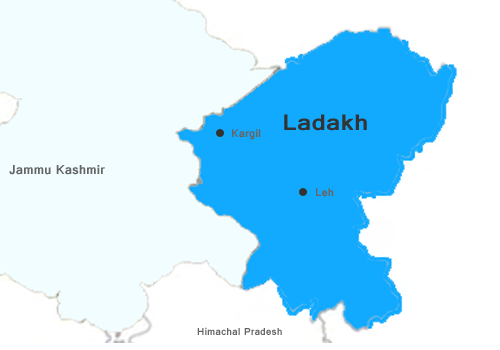
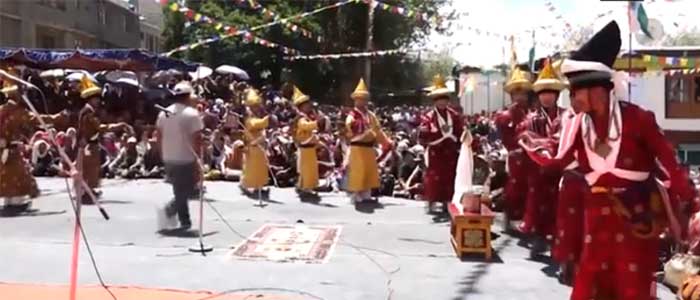
| District | Population(2020 est.) | Population(2011) | Percentage |
|---|---|---|---|
| Leh | 152,175 | 133,487 | 48.67 |
| Kargil | 160,514 | 140,802 | 51.33 |
 India Population
India Population 

